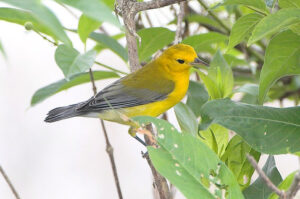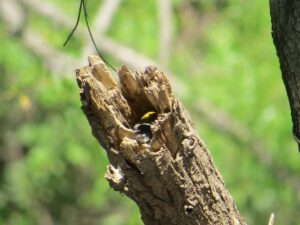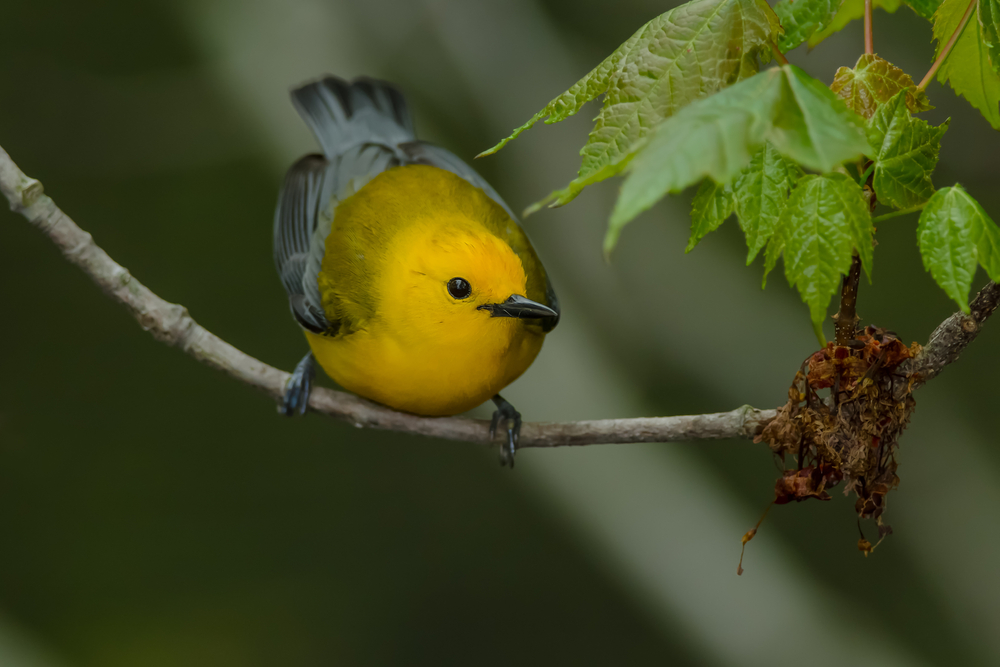Prothonotary Warbler, Protonotaria citrea
Bill Rowe
Out of the 35 species of warblers that we see regularly, fifteen are breeding birds—that is, they stay here in the summer to nest in larger or smaller numbers. One of these is the Prothonotary Warbler, a glowing yellow bird with dark wings that enlivens willow thickets, swampy areas, and the deeper forests along rivers and creeks. It is just different enough from our other warblers to merit being in a genus of its own, and it has one behavioral trait that sets it apart: it’s our only eastern warbler (and one of only two in North America) to nest in cavities in dead trees and stumps instead of building a nest up in the foliage or on the ground, and it will also adapt to nest boxes provided by us. Like most small birds, Prothonotaries will lay several eggs, and, whether or not they are successful in raising one brood, they may nest a second time the same year. One of the most intriguing features of this neat little bird is its strange name, which is usually explained in somewhat vague ways that don’t exactly agree with one another—something about yellow robes that certain officials were supposed to have worn. The well-known author and tour leader Rick Wright has taken on this mystery in an essay that some of our readers may enjoy; go to http://birdaz.com/blog/2013/
IDENTIFICATION: An easy warbler to identify, even at a distance: the yellow head and underparts, contrasting with greenish back and dark, solid blue-gray wings, give it away immediately. Also striking is the contrast of the black eye and spiky black bill against the yellow head, and the bird is somewhat chunky and short-tailed for a warbler. The female’s yellow is less intense than the male’s rich golden tone, but the general description remains the same for both sexes and all ages. The song, too, is easy to recognize: a high, ringing sweet-sweet-sweet… that carries well through the woods.
ST. LOUIS STATUS: A fairly common bird in habitats as described above, and thus readily found in many refuges, conservation areas, and state parks. In northern Missouri they are fewer and more localized, but around St. Louis you are likely to find Prothonotaries in any wet lowland wooded area. Like nearly all our warblers, they are neotropical migrants, arriving in the spring (typically April) and then departing in the fall to spend the winter from Mexico south to Colombia, Venezuela, and the Guianas, often in coastal swamps. Right now, in August, they are still around and may even sing occasionally, but they are hardly ever found beyond the end of September.
Learn more and listen to the songs and calls of Prothonotary Warblers here.


Female
Photo Credit: Al Smith
See the bird? That is her nest site.
Photo Credit: Bill Rowe




